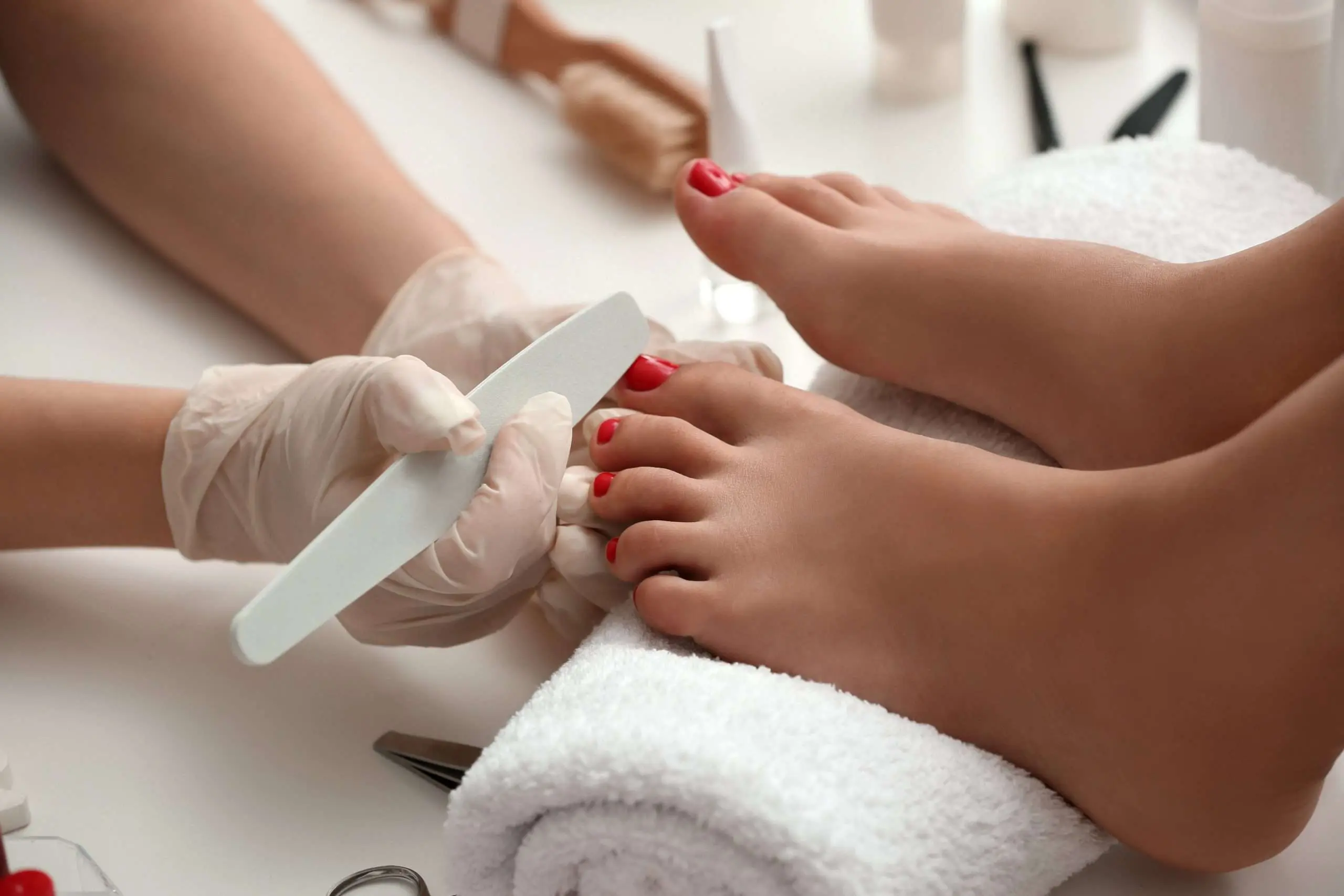
Pedicure is a cosmetic discipline that focuses on trimming and caring for the toenails, moisturizing the skin, and massaging the feet.
While many people entrust their foot care to health professionals like podiatrists, pedicures remain a paramedical solution in our society.
Therefore, podiatrists urge caution about pedicures and those who claim to be able to perform them for you. Here’s what your podiatrist has to say!
The pedicure and hygiene standards
Seeing as the foot is an area that is prone to bacterial growth, strict hygiene standards should be in place before a pedicure is considered “safe”.
However, if you choose to consult a beautician, chiropodist or podologist, you need to be aware that these professions are not subject to any official regulations.
Therefore, you have no way of ensuring that sterilization measures are properly carried out before treatment.
For instance, many people go to the podologist without knowing that they have a contagious infection; in this regard, non-compliance can potentially lead to serious issues.
On the other hand, a podiatry clinic is well equipped to offer you foot care that fully respects the protocol established by the Ordre des podiatres du Québec.
For example, the podiatrist or nurse specialized in foot care is required to sterilize every single one of their tools before proceeding.
Usually, sterilization is performed with the autoclave and the ultrasonic device.
These two eliminate the microbes, bacteria, viruses, and fungi that can result in:
- Nail fungus
- Athlete’s foot
- Plantar warts
- HIV
- Hepatitis
A nail size to keep in check
A good technique for trimming nails should be used for pedicures, as per hygiene standards.
Toenail care performed by a pedicurist is safe as long as they keep their instruments properly sterilized and use an adequate technique.
Nonetheless, podiatrists recommend foot care in a clinic for people who suffer from a disease that weakens their immune systems.
Among others, this is the case with:
- Diabetics
- People with a history of circulatory problems
- People with rheumatoid arthritis
- Immunosuppressed people
This will help you reduce the incidence of ingrown toenails, which can occur when a pedicurist trims the nail size too much.
When pedicures can become problematic
The podiatrist generally considers pedicures to be a safe procedure as long as they strictly respect health regulations.
However, they tend to disapprove of certain treatments being performed by technicians who do not hold the necessary qualifications.
A dangerous pedicure practice can not only lead to infections but also cause burns and lesions.
Therefore, the podiatrist asks to consider them with restraint.
To avoid this type of situation with your pedicurist, podiatrists invite you to beware of the following warning signs:
- A technician who doesn’t unpack their disposable work tools in front of you (nail file, bandages, etc.)
- A pedicurist who insists on sanding the soles of your feet, even if there is a problematic buildup of horns
- A pedicurist who uses a razor to remove your corns and calluses
- The pedicure salon that does not seem to have the necessary tools to sterilize reusable grooming instruments
Avoid disasters, see a podiatrist for your foot care needs
As a medical professional, the podiatrist is authorized to examine, diagnose and treat a wide range of plantar pathologies.
They will usually consider a pedicure to be a harmless procedure, however, podiatrists also stress the importance of enlisting the services of only certified technicians. This should help protect you against possible mishaps and potential plantar infections.
PiedRéseau podiatry clinics offer foot care that meets the highest standards. What are you waiting for to find out?